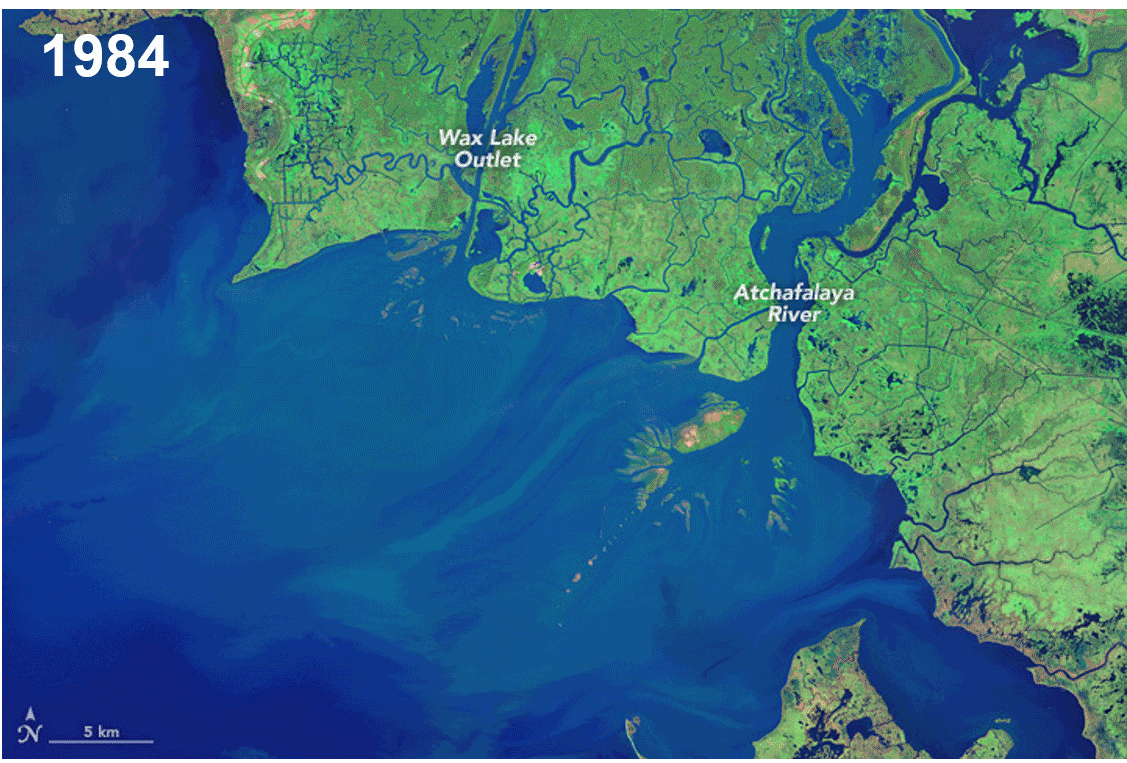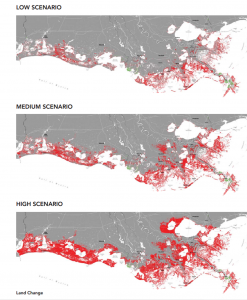New Study Emphasizes Need for Swift Action to Save Louisiana’s Coast
A recently published coastal study by Tulane researchers made bold predictions and grabbed headlines across the country. Of course, there’s more to a story than its headline, so we wanted to understand what this meant for the future of Louisiana’s coast and ongoing restoration efforts.
The study, published last week, reached an all too familiar conclusion — if things continue as they are, Louisiana’s marshes will drown, endangering our ability to continue to live in New Orleans or anywhere south of Interstate-10.
Despite this study’s grim predictions, hope isn’t lost. There is still time to complete restoration projects that will help us have a smaller, more sustainable delta, which is critical to Louisiana’s future.
This prediction closely matches the predictions of others, including those already contained in Louisiana’s 2017 Coastal Master Plan. But, the researchers reached their conclusion by focusing on a very different set of evidence than previous studies.
The Tulane study looks at potential “tipping points” for marshes in the Mississippi River Delta as a result of sea level rise rates by analyzing large soil borings with layers dating back over thousands of years.

The power of the river is fueling marsh growth south of Morgan City at the Wax Lake Delta.
It uses those borings to develop a relationship between rates of relative sea level rise — the term for the combined force of global sea level rise with sinking land — and when marshes convert to open water.
The study suggests that, in the past, relative sea level rise rates in excess of 3 millimeters per year (or just over a tenth of an inch) resulted in marshes drowning within a few centuries. With rates of 6 to 9 millimeters per year (or about a quarter to a third of an inch), marshes drowned in about 50 years.
Right now, Louisiana is already experiencing some of the highest rates of relative sea level rise in the world. The results of this study highlight the very real threats to the future of Louisiana’s coastal wetlands. They also emphasize the urgent window of opportunity we have to restore coastal wetlands now through sediment diversions while also limiting the rate of sea level rise by reducing emissions globally.
How Our Marshes Respond to Rising Seas
There have long been concerns about the vulnerability of marshes to the encroaching Gulf of Mexico. Remarkably, coastal marshes do have the ability to respond and keep pace with higher sea levels.
As sea levels rise, the marsh surface is covered with water for longer periods, allowing more time for mineral sediment — like the kind that the river carries — to settle on the marsh surface. That sediment builds on itself, and, in turn, it increases the elevation of the marsh surface. In some marshes, increased flooding may also increase the growth of marsh vegetation, also contributing to an increase in marsh elevation.
However, if sea level rise happens too fast and there’s a lack of mineral sediment to increase marsh elevation, they will drown. Luckily, we have a consistent source of sediment that is just waiting to be used and the restoration tool to do it — sediment diversions from the Mississippi River. By putting sediment-laden river water back into our coastal wetlands, we can build tens of thousands of acres of new land, and, just as importantly, we can sustain existing wetlands by giving them a source of sediment that they so desperately need.
Look at the wax lake delta

With the sediment carried from the Mississippi River down the Atchafalaya and through the Wax Lake Outlet, the land has continued to build up. It is one of the few areas on Louisiana’s coast that is gaining land.
The newly-published Tulane study suggests that in the past a consistent relative sea level rise of more than 3 millimeters per year was enough to overwhelm the marshes’ ability to increase its elevation over multiple centuries, or, if it was high enough, several decades.
However, a 2017 study by the same authors found that, so far, the majority of wetlands in Louisiana are currently keeping pace with relative sea level rise rates of 4 to 16 millimeters per year (or 0.16 to 0.78 inches).
While looking at the geological record is helpful, we need to recognize their limited ability to predict the future. In 2009, a study conducted by the U.S. Geological Survey called the popular Chandeleur Islands a lost cause, suggesting the barrier islands could disappear by 2013. Instead, more than a decade later, the islands have shown continuing recovery.
An Urgent Need for Action
Louisiana’s Coastal Master Plan process already uses realistic sea level rise predictions to inform our coastal restoration efforts. The 2017 plan used average relative sea level rise rates between 8 and 40-plus millimeters per year (0.31 to over 1.57 inches) to choose projects and allow science to guide investments. That modeling exceeded the amount of relative sea level rise predicted by the Tulane study, showing their dedication to using dollars responsibly and effectively.

To prevent history from repeating itself and the loss of another 5,000 square miles of wetlands, it is also critical that we work to reduce global carbon emissions to limit sea level rise as much as possible.
Under the 2017 Coastal Master Plan’s lowest sea level rise scenario, we would have nearly 3,000 square miles more land that would otherwise disappear under the high sea level rise scenario even with restoration projects. The difference in 2,000 square miles of Louisiana’s coast depends on our ability to reduce global carbon emissions, and quickly.
It isn’t new that more of Louisiana’s land will be lost in the decades and centuries to come, but the Coastal Master Plan gives a realistic picture of what is possible with restoration. Based on its modeling, the implementation of the projects contained in the plan will build and maintain more than 800 square miles that would otherwise be lost under its medium predictions for sea level rise.
Planning for the next iteration of the Coastal Master Plan is currently underway and studies like this one help us understand the challenges that we’re facing and push us forward toward developing innovative solutions.
We need to forcefully confront the threat of sea level rise and take the future into our own hands. You can sign up to get involved in advocating for sediment diversions here!